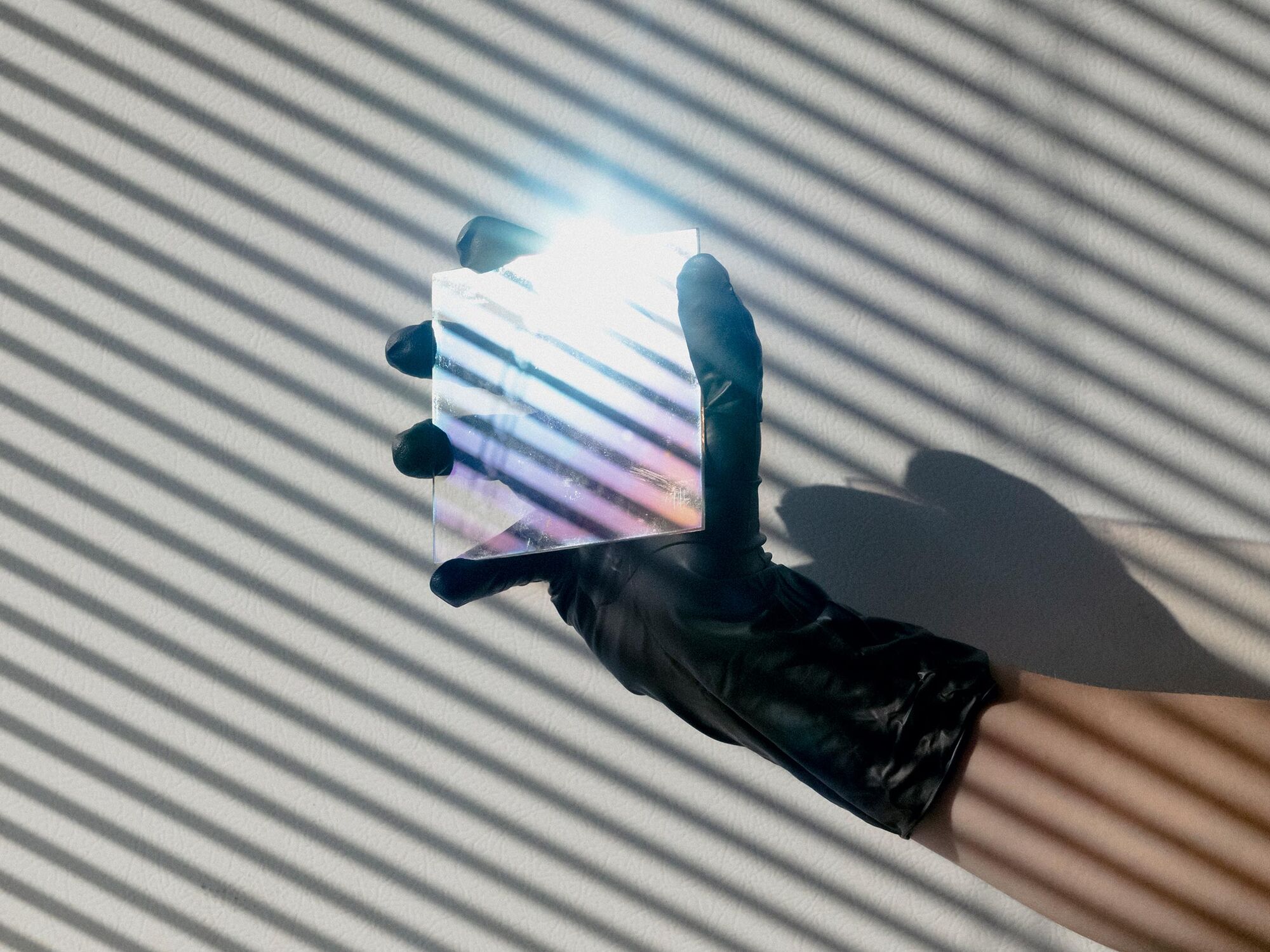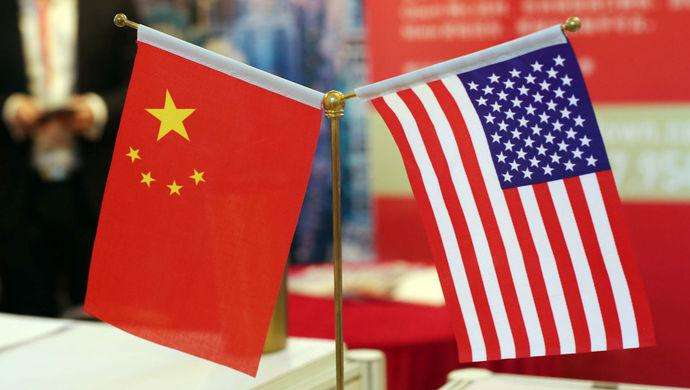Quickie
Colonel
The attack against Huawei by U.S. government entities continues with seemingly zero response from the Chinese side.
What if the diamond glass broke during loading testing in what is a genuine mistake by an overzealous technician. Opps...
Huawei Sting Offers Rare Glimpse of the U.S. Targeting a Chinese Giant
Diamond glass could make your phone’s screen nearly unbreakable—and its inventor says the FBI enlisted him after Huawei tried to steal his secrets.

A prototype of Akhan Semiconductor’s Miraj Diamond Glass.
The sample looked like an ordinary piece of glass, 4 inches square and transparent on both sides. It’d been packed like the precious specimen its inventor, Adam Khan, believed it to be—placed on wax paper, nestled in a tray lined with silicon gel, enclosed in a plastic case, surrounded by air bags, sealed in a cardboard box—and then sent for testing to a laboratory in San Diego owned by But when the sample came back last August, months late and badly damaged, Khan knew something was terribly wrong. Was the Chinese company trying to steal his technology?
The glass was a prototype for what Khan’s company, , describes as a nearly indestructible smartphone screen. Khan’s innovation was figuring out how to coat one side of the glass with a microthin layer of artificial diamond. He hoped to license this technology to phone manufacturers, which could use it to develop an entirely new, superdurable generation of electronics. Akhan says , as the product is known, is 6 times stronger and 10 times more scratch-resistant than , the industry standard that generates about $3 billion in annual sales for “Lighter, thinner, faster, stronger,” says Khan, in full sales mode. Miraj, he promises, will lead to a “fundamental next level in design.”
Like all inventors, Khan was paranoid about knockoffs. Even so, he was caught by surprise when Huawei, a potential customer, began to behave suspiciously after receiving the meticulously packed sample. Khan was more surprised when the U.S. Federal Bureau of Investigation drafted him and Akhan’s chief operations officer, Carl Shurboff, as participants in its investigation of Huawei. The FBI asked them to travel to Las Vegas and conduct a meeting with Huawei representatives at last month’s Consumer Electronics Show. Shurboff was outfitted with surveillance devices and recorded the conversation while a Bloomberg Businessweek reporter watched from safe distance.
This investigation, which hasn’t previously been made public, is separate from the recently announced against Huawei. On Jan. 28, federal prosecutors in Brooklyn the company and its chief financial officer, Meng Wanzhou, with multiple counts of fraud and conspiracy. In a separate case, prosecutors in Seattle with theft of trade secrets, conspiracy, and obstruction of justice, claiming that one of its employees stole a part from a robot, known as Tappy, at a facility in Bellevue, Wash. “These charges lay bare Huawei’s alleged blatant disregard for the laws of our country and standard global business practices,” Christopher Wray, the FBI director, said in a accompanying the Jan. 28 indictments. “Today should serve as a warning that we will not tolerate businesses that violate our laws, obstruct justice, or jeopardize national and economic well-being.” Huawei has denied the charges.
If the new investigation bears fruit, it could, along with the indictments, bolster the Trump administration’s effort to block Huawei from selling equipment for fifth-generation, or in the . The U.S. believes Huawei poses a national security threat, in part, because it could build undetectable backdoors into 5G hardware and software, allowing the Chinese government to spy on American communications and wage cyberwarfare. Huawei has said this is political posturing aimed at harming a Chinese company, and skeptics have pointed out that the T-Mobile allegation has since been settled in civil court and concerns events that played out more than a half-decade ago. “If Tappy is as far as they’ve gotten on [intellectual property] theft, that seems to be pretty thin gruel,” Adam Segal, a cybersecurity expert at the Council on Foreign Relations the Washington Postrecently.
On the same day Wray’s statement was released, the government searched the Huawei lab in San Diego where Akhan’s glass had been sent. The FBI raid was a secret, but not to Khan and Shurboff, who’d been receiving regular briefings of the investigation’s progress through Akhan’s lawyer, Renato Mariotti, a well-known former prosecutor who’s now a partner at Thompson Coburn LLP. By then, they’d succeeded in getting Huawei representatives to admit, on tape, to breaking the contract with Akhan and, evidently, to violating U.S. export-control laws. Huawei did not respond to repeated requests for comment. This story is based on documents—including emails and text messages exchanged among Huawei, Akhan, and the FBI—as well as reporting from the sting operation in Las Vegas and interviews with Khan and Shurboff. Businessweek shared a detailed account of the investigation with the U.S. Attorney’s Office for the Eastern District of New York, which declined to comment. The FBI also declined to comment.
Khan’s work on diamond glass goes back to his college days, when he began learning about so-called nanodiamonds as a 19-year-old electrical engineering and physics student at the University of Illinois at Chicago. After graduation, he ran experiments at the Stanford Nanofabrication Facility and teamed up with researchers at the U.S. Department of Energy’s Argonne National Laboratory, eventually developing and patenting a way to deposit a thin coating of tiny diamonds on materials such as glass. He also licensed diamond-related patents for Akhan from the Argonne lab in 2014. By the following year, Khan was confident enough to start promoting his new technology. He joined the conference circuit, began giving interviews to trade publications, and hired Shurboff, who’d spent 25 years in various roles at It was time, Khan believed, to go to market.
What if the diamond glass broke during loading testing in what is a genuine mistake by an overzealous technician. Opps...
Huawei Sting Offers Rare Glimpse of the U.S. Targeting a Chinese Giant
Diamond glass could make your phone’s screen nearly unbreakable—and its inventor says the FBI enlisted him after Huawei tried to steal his secrets.

A prototype of Akhan Semiconductor’s Miraj Diamond Glass.
The sample looked like an ordinary piece of glass, 4 inches square and transparent on both sides. It’d been packed like the precious specimen its inventor, Adam Khan, believed it to be—placed on wax paper, nestled in a tray lined with silicon gel, enclosed in a plastic case, surrounded by air bags, sealed in a cardboard box—and then sent for testing to a laboratory in San Diego owned by But when the sample came back last August, months late and badly damaged, Khan knew something was terribly wrong. Was the Chinese company trying to steal his technology?
The glass was a prototype for what Khan’s company, , describes as a nearly indestructible smartphone screen. Khan’s innovation was figuring out how to coat one side of the glass with a microthin layer of artificial diamond. He hoped to license this technology to phone manufacturers, which could use it to develop an entirely new, superdurable generation of electronics. Akhan says , as the product is known, is 6 times stronger and 10 times more scratch-resistant than , the industry standard that generates about $3 billion in annual sales for “Lighter, thinner, faster, stronger,” says Khan, in full sales mode. Miraj, he promises, will lead to a “fundamental next level in design.”
Like all inventors, Khan was paranoid about knockoffs. Even so, he was caught by surprise when Huawei, a potential customer, began to behave suspiciously after receiving the meticulously packed sample. Khan was more surprised when the U.S. Federal Bureau of Investigation drafted him and Akhan’s chief operations officer, Carl Shurboff, as participants in its investigation of Huawei. The FBI asked them to travel to Las Vegas and conduct a meeting with Huawei representatives at last month’s Consumer Electronics Show. Shurboff was outfitted with surveillance devices and recorded the conversation while a Bloomberg Businessweek reporter watched from safe distance.
This investigation, which hasn’t previously been made public, is separate from the recently announced against Huawei. On Jan. 28, federal prosecutors in Brooklyn the company and its chief financial officer, Meng Wanzhou, with multiple counts of fraud and conspiracy. In a separate case, prosecutors in Seattle with theft of trade secrets, conspiracy, and obstruction of justice, claiming that one of its employees stole a part from a robot, known as Tappy, at a facility in Bellevue, Wash. “These charges lay bare Huawei’s alleged blatant disregard for the laws of our country and standard global business practices,” Christopher Wray, the FBI director, said in a accompanying the Jan. 28 indictments. “Today should serve as a warning that we will not tolerate businesses that violate our laws, obstruct justice, or jeopardize national and economic well-being.” Huawei has denied the charges.
If the new investigation bears fruit, it could, along with the indictments, bolster the Trump administration’s effort to block Huawei from selling equipment for fifth-generation, or in the . The U.S. believes Huawei poses a national security threat, in part, because it could build undetectable backdoors into 5G hardware and software, allowing the Chinese government to spy on American communications and wage cyberwarfare. Huawei has said this is political posturing aimed at harming a Chinese company, and skeptics have pointed out that the T-Mobile allegation has since been settled in civil court and concerns events that played out more than a half-decade ago. “If Tappy is as far as they’ve gotten on [intellectual property] theft, that seems to be pretty thin gruel,” Adam Segal, a cybersecurity expert at the Council on Foreign Relations the Washington Postrecently.
On the same day Wray’s statement was released, the government searched the Huawei lab in San Diego where Akhan’s glass had been sent. The FBI raid was a secret, but not to Khan and Shurboff, who’d been receiving regular briefings of the investigation’s progress through Akhan’s lawyer, Renato Mariotti, a well-known former prosecutor who’s now a partner at Thompson Coburn LLP. By then, they’d succeeded in getting Huawei representatives to admit, on tape, to breaking the contract with Akhan and, evidently, to violating U.S. export-control laws. Huawei did not respond to repeated requests for comment. This story is based on documents—including emails and text messages exchanged among Huawei, Akhan, and the FBI—as well as reporting from the sting operation in Las Vegas and interviews with Khan and Shurboff. Businessweek shared a detailed account of the investigation with the U.S. Attorney’s Office for the Eastern District of New York, which declined to comment. The FBI also declined to comment.
Khan’s work on diamond glass goes back to his college days, when he began learning about so-called nanodiamonds as a 19-year-old electrical engineering and physics student at the University of Illinois at Chicago. After graduation, he ran experiments at the Stanford Nanofabrication Facility and teamed up with researchers at the U.S. Department of Energy’s Argonne National Laboratory, eventually developing and patenting a way to deposit a thin coating of tiny diamonds on materials such as glass. He also licensed diamond-related patents for Akhan from the Argonne lab in 2014. By the following year, Khan was confident enough to start promoting his new technology. He joined the conference circuit, began giving interviews to trade publications, and hired Shurboff, who’d spent 25 years in various roles at It was time, Khan believed, to go to market.

